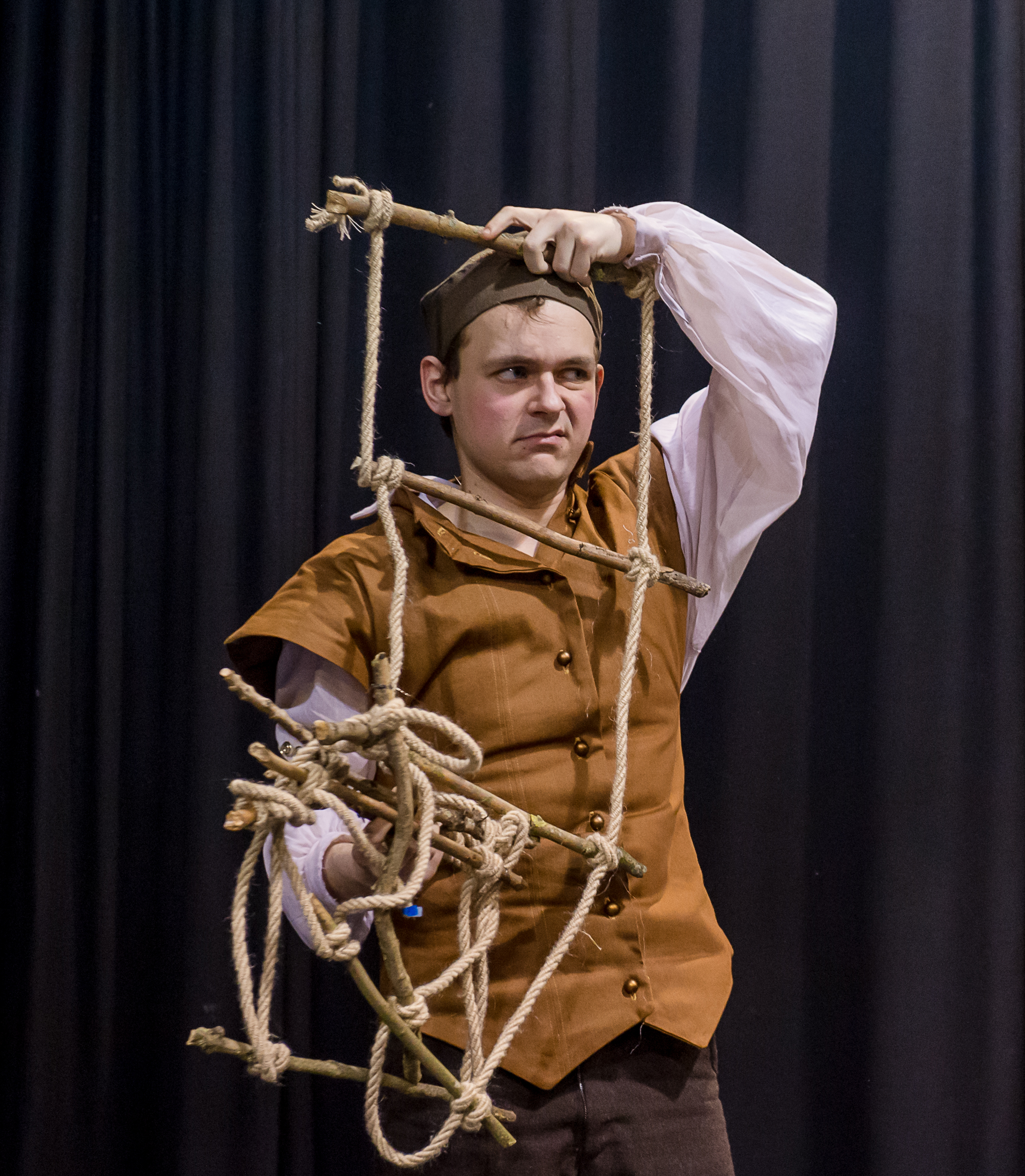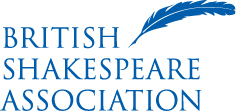‘[O]ur wits are so diversely coloured’: Thoughts on the 2016 Disability and Shakespearean Theatre Symposium at Glasgow University
1st June 2016
By Jessi Parrot (@messijessijumps)
In the public imagination, it would seem, disability and Shakespeare are not the most obvious pairing – that is, if the recent adaptation of the London tube map to feature all of Shakespeare’s characters in place of station names is anything to go by. Indeed, according to the image, commissioned by the Royal Shakespeare Company and to be found here, Richard III provides the only example of disability representation, which is denoted by the presence of the wheelchair symbol that usually signifies an accessible station. To the casual observer, then, convening a full day conference on the meeting points of these two subjects would be a futile exercise – not least because the most frequent references to impairment come in the form of (potentially offensive) metaphors like the following one, taken from one of the Chorus’ Prologue speeches in Henry V, referring to the impatient French:
And chide the cripple tardy-gaited night
Who, like a foul and ugly witch, doth limp
So tediously away. (Henry V – Act IV, Prologue, ll. 21-23)
Those who read Shakespeare specifically in relation to disability know that such beliefs are reductive (and indeed false), of course – and what the symposium at Glasgow did so wonderfully was to bring together a group of people who shared the primary aim of debunking them. When thinking of the noun with which I might best encapsulate the day, which I was given the opportunity to attend through a bursary from the British Shakespeare Association, what came to mind was ‘spectrum’. Following a search of the concordance at Open Source Shakespeare, it seems that this is a word which, although documented as in use during at least part of his lifetime, is one of the few that is entirely absent from Shakespeare’s works. The phrase I have chosen for the half-title of this blog post (‘our wits are so diversely coloured’) was found by way of a synonym from the period, ‘compass’, and appears near the word in a speech from the Third Citizen in Coriolanus. It suited as a description because it not only evokes the diversity of the human condition (which was represented in microcosm by the presenters at the symposium) but the equally diverse nature of the topics we brought with us.
The spectrum was evident from the opening moments of the keynote address, given by Prof Chris Mounsey of The University of Winchester, who began by stating that he felt both ironic and inadequate, being an eighteenth-centuryist positioned as the academic authority for a day focused around a sixteenth-century playwright. His presentation centred on the application of the concept of VariAbility to Shakespeare’s corpus (a word I have used here in full cognisance of its dual denotation of both physical and literary bodies). He asked us to consider alternative ways of reading the manner in which difference is presented in the works of the Bard. Whilst he had much to share that was definitely ironic, it was more than adequate, and set the tone for the rest of the day – a sort of enamoured and informed irreverence.
The panels which followed were similarly eclectic. These comprised of papers with subjects ranging from an analysis of Growing Up Downs (the fairly recent BBC documentary on an amateur production of Hamlet involving people with learning disabilities); or the implications of choosing, perhaps, to cast ‘Hamlet in a wheelchair’; to the potential staging decisions regarding Lavinia’s prostheses in Titus Andronicus; and the suggestion of reading King Lear with Lennard Davis’ concept of the ‘dismodern’ (a postmodern understanding of bodies that is fully incorporative of disability) in mind. My own contribution involved an analysis of the use of Shakespeare’s texts, and especially The Tempest, during the Opening Ceremonies of the Olympic and Paralympic Games of London 2012.
Where these presentations explored the significance of a disability-based reading of characters easily identified in Shakespeare, others sought to emphasise an absence. For instance, in acknowledging the copious metaphorical references to deafness across his works, one recognises the comparative paucity of representation given to Deaf characters (as opposed to the deliberate deafness employed by hearing individuals for a purpose usually involving manipulation). Similarly, one might not at first notice the reliance on the literal structures of our musculoskeletal system that pervades the plays or, if it has been noted, it could easily (wrongly) be dismissed as unnecessary over-reading.
These two apparent opposites of presence and absence found their propinquity in the final session, a presentation given by two co-ordinators of the Shakespeare Schools Festival, an annual UK-wide festival of performances of his plays by schoolchildren. This programme helps teachers and pupils to engage differently with the most prominent playwright on the school curriculum and, through the eventual productions, aims to bring together groups of people from the same areas who might never otherwise interact. In doing so, it offers me a helpful segue to the other aspect of the symposium that was extremely thought-provoking and helpful – the styles of delivery and teaching.
For, just as disability both necessitates and offers alternative possibilities of reading, it both requires and allows inventive ways of disseminating the information that these readings discover. This was accepted by both organisers and attendees as a given, even before the day itself, and accommodations and adaptations were plentiful and managed with respect. Whether it was sudden travel difficulties which rendered physical presence impossible, repeated cancellations of sign-language interpreters, or difficulty handling materials, there was a solution. Each presenter was asked to provide a draft version of their paper for digital pre-circulation, which then allowed speedy access and editing during presentations and removed the need for an interpreter for at least the duration of the panels. Distance was quickly surmounted via the medium of Skype. As with the topics of presentations, the precedent for these alternatives was set by Chris Mounsey’s keynote, which he split with his assistant Stan, in order to minimise the strain on his eyes. This took the form of a quasi-Socratic dialogue, which meant that the digital version of his slides read much like the play scripts of his subject, and that their repartee was full of deliberately dramatic flair. For me, as a wheelchair user who, being a first year doctoral student, am just beginning my venture into the realms of teaching seminars, this was extremely confidence-boosting. I now know that it is not only possible, but perfectly acceptable, to incorporate (pun very much intended) my bodily difference into the way I interact with students.
This link to my earlier mention of both the literary and literal uses of ‘corpus’, then, allows me to conclude with the overarching message I took from this wonderful day. What struck me throughout this symposium was just how much our bodies inform the way we read and, equally, how much what we read can inform the ways we consider our bodies. I learnt so much from the day and the people I met there, and am still reaping the benefits nearly two months later. I could not have wished for a better or more supportive fit for my first conference, and I will be eternally grateful to everyone who helped introduce me to, to use the words of The Tempest that were central to my paper, this ‘brave new world’ where disability earns its rightful place as a frame of reference.
 Children also reported that they liked the fact it was funny, that it was easy to understand and the actors were confident. It is fascinating what the young audiences picked up, and how their opinions vary. Some said they didn’t know any Shakespeare plays so they didn’t enjoy the production, others seemed to acknowledge that not knowing the plays was part of the fun. There were certainly moments when children were pleased they recognised characters, largely Macbeth’s witches or Puck. One child told me he didn’t understand why Cleopatra was in the play, and looked utterly unconvinced when he discovered Shakespeare had written a play about her.
Children also reported that they liked the fact it was funny, that it was easy to understand and the actors were confident. It is fascinating what the young audiences picked up, and how their opinions vary. Some said they didn’t know any Shakespeare plays so they didn’t enjoy the production, others seemed to acknowledge that not knowing the plays was part of the fun. There were certainly moments when children were pleased they recognised characters, largely Macbeth’s witches or Puck. One child told me he didn’t understand why Cleopatra was in the play, and looked utterly unconvinced when he discovered Shakespeare had written a play about her.